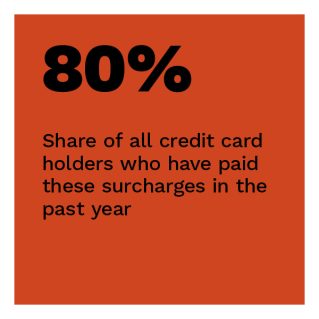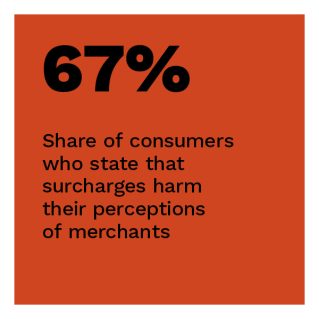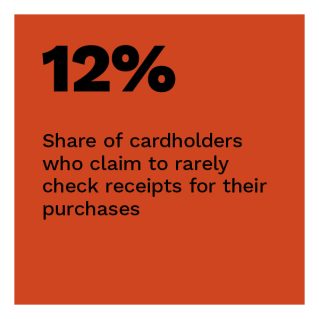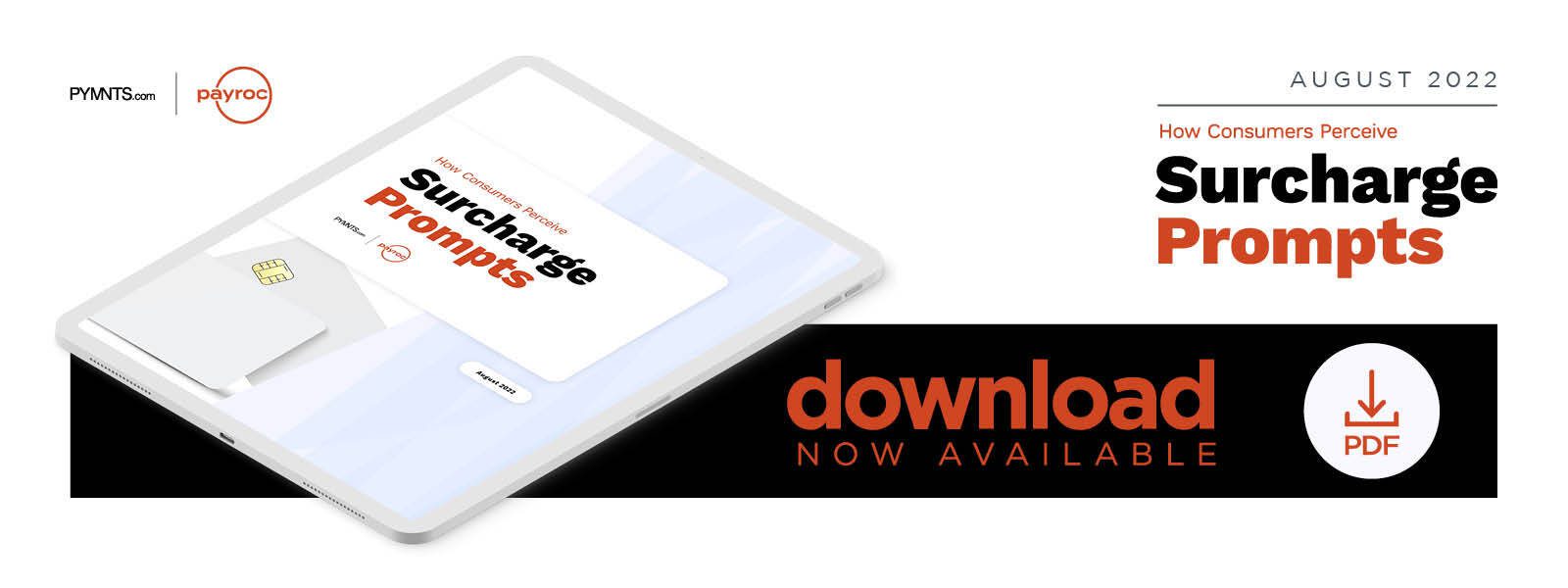Study Finds Hidden Surcharges Sour Consumers’ Impressions of Merchants

In a time marked by sudden change and economic concern, each dollar counts for local businesses. Credit card surcharges are a prevalent cost-mitigation strategy that restaurants and retail stores use to offer customers the most comprehensive level of payment acceptance.
Though many consumers pay the surcharge, our data reveals that the practice can tarnish their opinion of the merchant and drive some from returning. These apprehensions are strongest among consumers who have never paid a surcharge before.
Communication at the point of sale on fees and education about other payment options can help allay consumers’ frustration at having to pay a surcharge, yet we find that approximately two-thirds of consumers report that none or very few merchants they visit had posted signs informing customers of surcharges or that cashiers clearly inform them about surcharges.
As a result, 68% of cardholders claim to check most or all of their receipts. Just 12% of consumers feel safe enough to rarely look through their receipts for hidden fees or surcharges.
 These are just some of the findings PYMNTS uncovered in “How Consumers Perceive Surcharge Prompts,” a PYMNTS and Payroc collaboration. We surveyed 2,879 U.S. credit card users from March 18 to March 29, 2022, to learn more about their attitudes toward surcharges on credit card purchases and how merchants can better communicate their intention to levy these surcharges at the point of sale.
These are just some of the findings PYMNTS uncovered in “How Consumers Perceive Surcharge Prompts,” a PYMNTS and Payroc collaboration. We surveyed 2,879 U.S. credit card users from March 18 to March 29, 2022, to learn more about their attitudes toward surcharges on credit card purchases and how merchants can better communicate their intention to levy these surcharges at the point of sale.
More key findings from the study include:
• Consumers use credit cards for a considerable number of restaurant and retail transactions, but these merchants levy surcharges in just one out of 10 transactions. Debit and credit cards account for 71% of retail and 70% of restaurant transactions, and 59% of consumers have used a credit card at a retail store or restaurant in the past year. Consumers use cash for just 17% of restaurant transactions and settle a mere 13% of retail transactions with cash. Though these numbers suggest that surcharges could affect a large variety of cardholders — and data shows most cardholders have faced a surcharge at least once — we find that, at most, 10% of transactions involve a surcharge.
• Local restaurants and merchants are most likely to require consumers to pay a surcharge, and cardholders under financial distress are more likely than the average to have paid a surcharge.  While 14% of credit card transactions at local restaurants and retail shops have used a surcharge to cover processing expenses, national or regional restaurants and retailers are less likely to impose them, at 11% and 7.9%, respectively. PYMNTS’ research also finds that 80% of all cardholders have paid surcharges, with those under financial distress more likely to have paid them.
While 14% of credit card transactions at local restaurants and retail shops have used a surcharge to cover processing expenses, national or regional restaurants and retailers are less likely to impose them, at 11% and 7.9%, respectively. PYMNTS’ research also finds that 80% of all cardholders have paid surcharges, with those under financial distress more likely to have paid them.
• Merchants pay the price for surcharges: Nearly two-thirds of consumers who have paid a surcharge say it negatively impacted their impression of the merchant. Though most cardholders pay surcharges when requested, 67% still say facing a surcharge negatively impacts their perception of a merchant. Among cardholders who have never paid a surcharge, 82% agree that a surcharge worsens their view of a merchant, and 56% say they would switch merchants to avoid surcharges. Overall, 44% of cardholders are highly likely to be on the lookout for competing merchants that do not charge fees for credit card transactions.
To learn more about consumer attitudes toward credit card surcharges, download the report.
